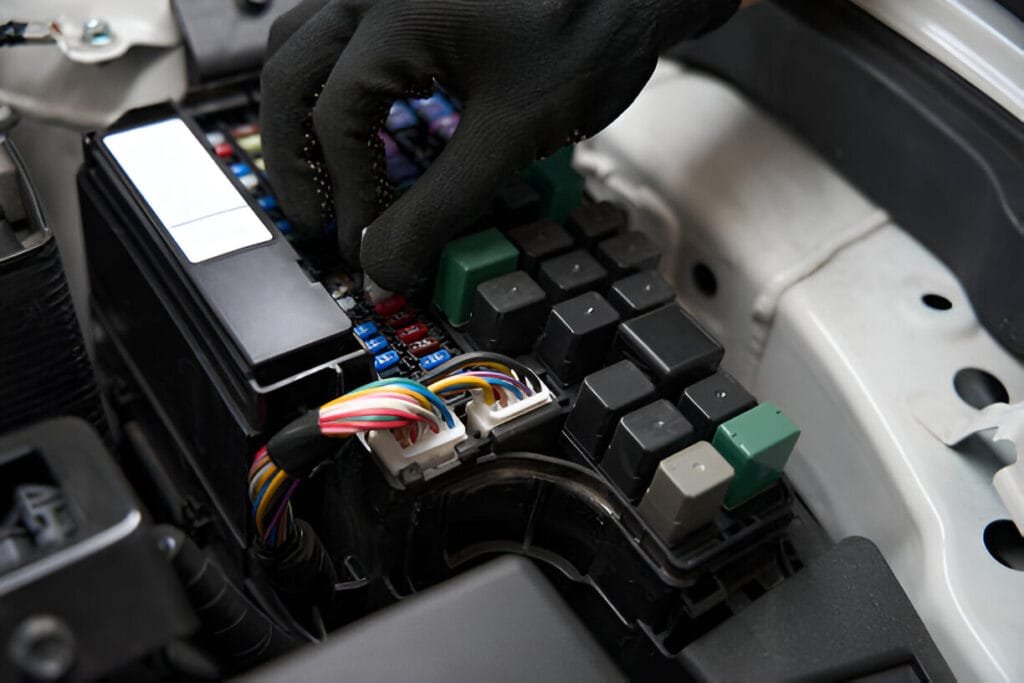Automotive electrical connectors are the unsung heroes of modern vehicle systems, quietly ensuring that power and signals flow seamlessly between components. From engine management systems to advanced driver-assistance systems (ADAS), these connectors are the backbone of a vehicle’s electrical architecture. Without them, even the most sophisticated car would grind to a halt.
In this article, we’ll dive into the world of automotive electrical connectors, exploring their types, structures, applications, and best practices for selection and maintenance. Whether you’re an automotive professional or an enthusiast, this guide will equip you with actionable insights to understand and work with these critical components.
Definition and Function
Automotive electrical connectors are devices designed to join cables, wires, or electronic components securely. They serve three primary purposes:
- Power Transmission: Delivering electricity to components like headlights, ignition systems, or infotainment units.
- Signal Transmission: Facilitating data transfer between modules such as sensors and control units.
- Circuit Protection: Shielding connections from external elements like moisture, dust, and vibrations through robust sealing and insulating materials.
Think of connectors as the “bridges” of a vehicle’s electrical system. Without them, power and communication would be disconnected islands.
Common Types of Automotive Electrical Connectors
Function
- Power Transmission Connectors
These are designed for high-power devices like engine management systems or electric motors in hybrid vehicles. For example, high-current connectors used in electric vehicles (EVs) must withstand extreme temperatures and voltages while maintaining safety standards. - Signal Transmission Connectors
These low-power connectors handle data communication between systems like ADAS cameras or in-car Ethernet networks. For instance, Ethernet-based connectors enable fast data transfer in modern infotainment systems. - Hybrid Connectors
Hybrid connectors combine power and signal capabilities into one unit, reducing complexity in modular designs. They are particularly common in EVs where charging ports often need to transmit both power and diagnostic data simultaneously.
Structure
- Pin-Type (Pin/Pigtail) Connectors
Known for their reliability in high-current applications like starter motors or headlights, pin-type connectors often feature robust locking mechanisms to prevent accidental disconnections. - Blade-Type Connectors
Blade connectors are widely used in relays and switches due to their simplicity and ease of use. They’re ideal for situations where quick assembly is required without compromising performance. - Bullet-Type Connectors
Bullet connectors allow for quick disconnection and reconnection, making them perfect for auxiliary lighting or audio equipment that may need frequent adjustments. - Ring Terminals
Ring terminals are secured with bolts or screws, making them highly stable under vibration-heavy conditions such as those found in engine bays or chassis grounding points.
Environmental Adaptability
- Waterproof Connectors (Weatherproof Connectors)
These connectors are sealed against moisture and dust intrusion, making them indispensable in exposed areas like engine sensors or exterior lighting modules. - Quick Disconnect Connectors
Designed for components requiring frequent maintenance—like fuse boxes—these connectors prioritize ease of use without sacrificing durability.
Specific Application Scenarios
Automotive Wiring Harness Connectors
The wiring harness is the nervous system of a vehicle, connecting multiple components through a single integrated network. Wiring harness connectors ensure seamless integration while protecting against environmental stressors like heat and vibration.
For example:
- TE Connectivity offers high-performance harness solutions tailored for durability.
- Delphi’s Metri-Pack series is known for its compact design that balances performance with space-saving needs.
Specialized Connectors
- FAKRA Coaxial Connectors
Used in RF applications like GPS antennas or satellite radios, FAKRA connectors provide excellent shielding against signal interference while maintaining compactness. - Metri-Pack & Weather Pack Connectors
Developed by Delphi, these are go-to options for harsh environments:- Metri-Pack excels in compact yet durable designs.
- Weather Pack offers superior waterproofing for engine bays or undercarriage areas exposed to dirt and moisture.
How to Choose the Right Automotive Electrical Connector
Selecting the right connector involves balancing technical requirements with application-specific needs:
Current Requirements
Match the connector’s current rating with the device’s power demand:
- High-power devices (e.g., electric motors) require heavy-duty plugs resistant to heat and voltage.
- Low-power devices (e.g., sensors) can use lightweight options with lower ratings.
Environmental Conditions
For exposed components like exterior lighting or undercarriage sensors:
- Opt for waterproof designs with corrosion-resistant materials.
- Ensure proper sealing to prevent ingress of dust or water.
Cable Compatibility
Verify compatibility with wire gauge, insulation type, and terminal design to avoid poor connections that could lead to failures over time.
Recommended Brands
Trusted brands like Molex, TE Connectivity, and Amphenol offer reliable solutions across various automotive applications:
- Molex specializes in compact designs ideal for space-constrained setups.
- TE Connectivity provides versatile solutions suitable for both standard vehicles and EVs.
- Amphenol focuses on industrial-grade performance for demanding environments.
Installation and Maintenance Guide
Installation Steps
Proper installation ensures long-term reliability:
- Strip insulation from wires carefully without damaging conductors.
- Crimp terminals securely using a quality crimping tool.
- Insert terminals into housings until they lock firmly in place.
- Check seals for integrity; apply conductive grease if necessary to enhance conductivity and prevent corrosion.
Routine Maintenance
Regular maintenance extends connector lifespan:
- Inspect connections periodically for looseness or corrosion.
- Clean contact surfaces using appropriate cleaning agents.
- Replace damaged seals promptly to maintain waterproofing integrity.


